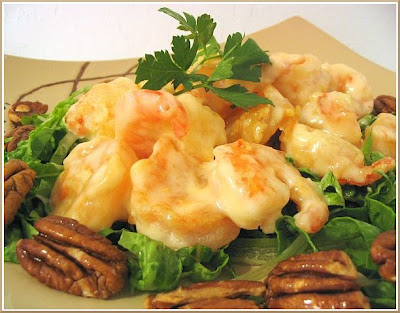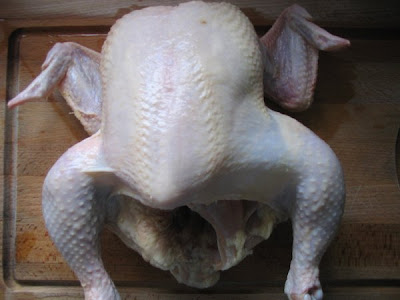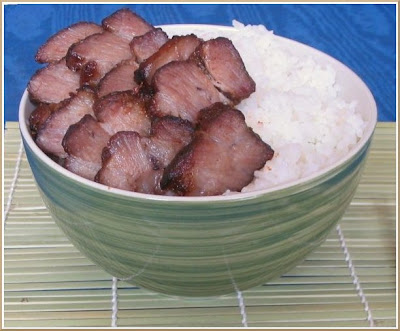One purpose of this blog is to document my culinary endeavors. By endeavors I meant experiments, the good and the bad. It’s easy document the successful experiments, the ones that turn out well after the first attempt, like the strawberry lemon bars. It’s more difficult to document the experiments that fall short, the well... how should I put this... the failures.. Usually, I keep experimenting until I achieve the happy ending of a desired result. Unfortunately, Chinese steamed buns have me stumped so I’m wondering if anyone has any tips to make soft and fluffy steamed buns.
Last time I made cha shao, Steven and I ate it all before I could make bao. I promised that next time I made the pork, I would specifically set aside some for bun making. I have tried to make Chinese steamed buns many times in the past, during my inexperienced but ambitious teenage years, only to obtain less than stellar results. Emboldened by my recent successes with sticky buns and brioche (more on this later), I figured I was on a roll (I guess that pun was intended). Now that I’m older and wiser, at least I would like to think that I am, I figured I would have no trouble reproducing the soft and fluffy pristine white buns served at dim sum and Chinese bakeries. Boy was I wrong…
I must have looked at least a dozen recipes. Many recipes called for yeast raised dough made with a starter. So I decided to take this approach. I made a basic starter, then made the dough, let it rise, shaped it into buns, proofed, then steamed them. They looked a little… odd. Frankly they weren’t the prettiest buns on the dim sum trolley but looks aren't everything! I was hoping they would taste good. Well… the good news is that I did a decent job with the filling but the buns themselves tasted chewy and doughy, not the light and airy interior I was hoping for.
The recipe I used came from Ellen Leong Blonder’s Dim Sum: The Art of Chinese Tea Lunch. This seemed like a pretty decent recipe to me. The use of baking powder and baking soda would provide additional leavening power along with the yeast raised dough. The author states that the vinegar makes the dough more tender.
(Half of the original recipe)
Starter
1 tsp active dry yeast (I used instant yeast)
1/2 C lukewarm water
3 Tbsp sugar
3/4 C cake flour
Dough
1/4 tsp salt
1 1/2 tsp rice vinegar
1 C cake flour
1 1/2 Tbsp baking powder
1/8 tsp baking soda
1 1/2 tsp shortening (I used oil)
- The recipe is not entirely to blame for my poor results because I did not have any cake flour, so I substituted AP flour, which I suspect was mistake number one. The lower gluten content in cake flour would result in more tender buns. Also cake flour is bleached so the buns would be whiter than those baked with unbleached AP flour (mine were a bit yellow).
- Another possibility is that I overkneading the dough, leading to gluten formation. I used my Kitchenaid to knead the dough for a good 5 minutes. In retrospect this may not be good for bun dough because Chinese buns are not as chewy as oven-baked bread. Perhaps, less kneading the better.
- I also found some conflicting information about what leavening is best buns. Some say that using a yeast dough is unnecessarily because restaurants use only baking powder and cake flour. On the other hand, some sources attest that using only baking powder will yield bao that are less fluffy than those made with both yeast and baking powder.
- The grind of the flour also seems to be important. Some recipes call for Hong Kong flour, which is bleached, superfine flour. Maybe I'll look into buying this at my local Asian grocer but I think, cake flour would be an adequate substitute. Buns made entirely from cake flour are sometimes too lumpy, thus cake flour should be mixed with some AP flour.
- Some recipes call for milk instead of water. Maybe milk would create a more delicate dough.
What should I do for next time?
- Flour: Hong Kong/special bao flour? Cake flour? 50/50 cake and AP flour?
- Leavening: Yeast + baking powder or just baking powder?
- Liquids: Milk or water?
- Less kneading?
- Longer rise? Longer time for the starter?
- More baking soda + vinegar for an even higher rise?
And the final question? How do I get the bao to look like the ones served at dimsum. The bun itself looks like it blossomed, the filling isn’t entirely encased. Do I snip after I steam? I snipped before I steamed this time and it was pretty far from what they look like at dim sum.
Last time I made cha shao, Steven and I ate it all before I could make bao. I promised that next time I made the pork, I would specifically set aside some for bun making. I have tried to make Chinese steamed buns many times in the past, during my inexperienced but ambitious teenage years, only to obtain less than stellar results. Emboldened by my recent successes with sticky buns and brioche (more on this later), I figured I was on a roll (I guess that pun was intended). Now that I’m older and wiser, at least I would like to think that I am, I figured I would have no trouble reproducing the soft and fluffy pristine white buns served at dim sum and Chinese bakeries. Boy was I wrong…
I must have looked at least a dozen recipes. Many recipes called for yeast raised dough made with a starter. So I decided to take this approach. I made a basic starter, then made the dough, let it rise, shaped it into buns, proofed, then steamed them. They looked a little… odd. Frankly they weren’t the prettiest buns on the dim sum trolley but looks aren't everything! I was hoping they would taste good. Well… the good news is that I did a decent job with the filling but the buns themselves tasted chewy and doughy, not the light and airy interior I was hoping for.
The recipe I used came from Ellen Leong Blonder’s Dim Sum: The Art of Chinese Tea Lunch. This seemed like a pretty decent recipe to me. The use of baking powder and baking soda would provide additional leavening power along with the yeast raised dough. The author states that the vinegar makes the dough more tender.
(Half of the original recipe)
Starter
1 tsp active dry yeast (I used instant yeast)
1/2 C lukewarm water
3 Tbsp sugar
3/4 C cake flour
Dough
1/4 tsp salt
1 1/2 tsp rice vinegar
1 C cake flour
1 1/2 Tbsp baking powder
1/8 tsp baking soda
1 1/2 tsp shortening (I used oil)
- The recipe is not entirely to blame for my poor results because I did not have any cake flour, so I substituted AP flour, which I suspect was mistake number one. The lower gluten content in cake flour would result in more tender buns. Also cake flour is bleached so the buns would be whiter than those baked with unbleached AP flour (mine were a bit yellow).
- Another possibility is that I overkneading the dough, leading to gluten formation. I used my Kitchenaid to knead the dough for a good 5 minutes. In retrospect this may not be good for bun dough because Chinese buns are not as chewy as oven-baked bread. Perhaps, less kneading the better.
- I also found some conflicting information about what leavening is best buns. Some say that using a yeast dough is unnecessarily because restaurants use only baking powder and cake flour. On the other hand, some sources attest that using only baking powder will yield bao that are less fluffy than those made with both yeast and baking powder.
- The grind of the flour also seems to be important. Some recipes call for Hong Kong flour, which is bleached, superfine flour. Maybe I'll look into buying this at my local Asian grocer but I think, cake flour would be an adequate substitute. Buns made entirely from cake flour are sometimes too lumpy, thus cake flour should be mixed with some AP flour.
- Some recipes call for milk instead of water. Maybe milk would create a more delicate dough.
What should I do for next time?
- Flour: Hong Kong/special bao flour? Cake flour? 50/50 cake and AP flour?
- Leavening: Yeast + baking powder or just baking powder?
- Liquids: Milk or water?
- Less kneading?
- Longer rise? Longer time for the starter?
- More baking soda + vinegar for an even higher rise?
And the final question? How do I get the bao to look like the ones served at dimsum. The bun itself looks like it blossomed, the filling isn’t entirely encased. Do I snip after I steam? I snipped before I steamed this time and it was pretty far from what they look like at dim sum.











































